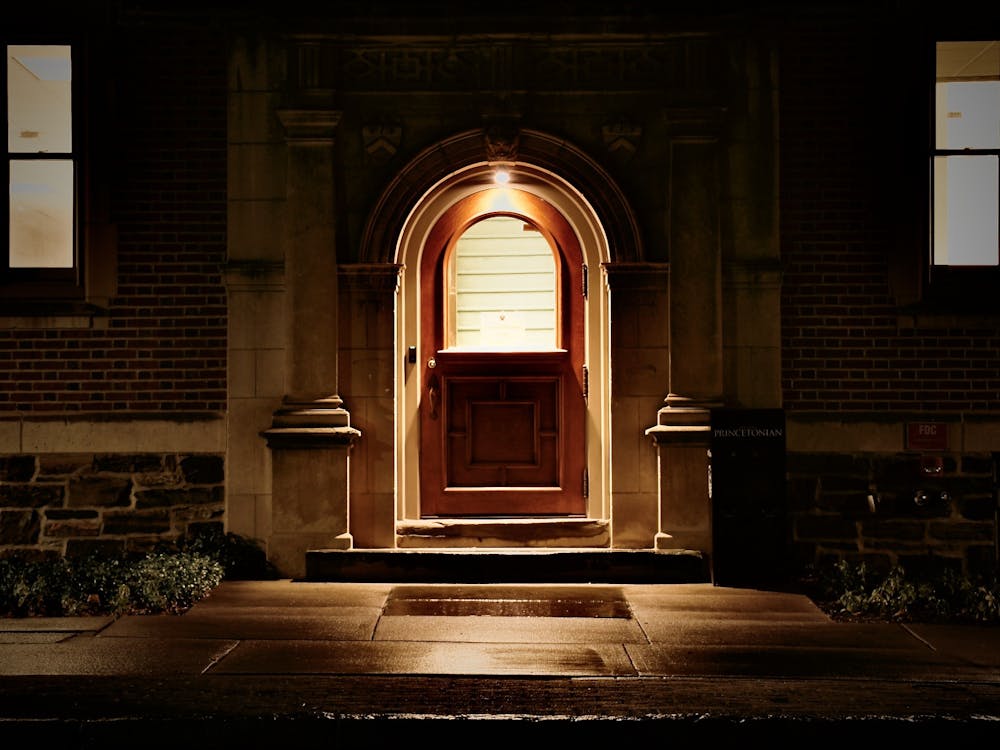The professor had already begun her lecture when I barged into Blair Hall T5, several minutes late for the three-hour seminar. Mouthing a quick apology, I found the last seat around the circular wooden table, and fumbled for my copy of Dostoevsky’s “Crime and Punishment.” A typical freshman, I had gotten lost on my way to class and was now sitting quietly — embarrassed and perspiring after three flights of stairs — trying desperately not to draw attention to myself. But I had no such luck. Though my entrance was met with some quiet giggling, it quickly escalated into a hearty round of laughter, with one unsuspecting freshman boy at the epicenter of the joke. It was then, as I looked around the room, that I realized what was so funny: in a three-hour-long discussion-based seminar, I was the only boy in a class of fifteen.
Throughout the course of this first week, I puzzled at the irony of my situation. Scholarly articles and news reports rightfully highlight the dearth of female students in STEM classes and majors, particularly noting this inequality in computer science. Even my gently used copy of the Princeton Pre-read — Claude Steele’s “Whistling Vivaldi”— points toward the threat of underperformance when students of a certain identity lack critical mass. Very common instances of this, Steele explains, are female college students in math and science tracks. Now I, quite inadvertently, found myself on the flip side of that scenario. While my particular circumstance does not seem exceedingly consequential — especially compared to the worryingly unequal ratio of women-to-men in STEM classes — I still worried that my lack of critical mass would affect my participation in class.
Thankfully, the course quickly found its own natural rhythm, and I’ve been happy to see my token masculinity has gone largely unnoticed. Topics of conversation remain practically indistinguishable from other co-ed English courses I’ve taken, and as with many of my classmates, I look forward to class on Wednesday afternoons. Yet, there are still times when I have an odd and hard-to-place feeling of awkwardness when discussing certain topics. For instance, I sometimes refrain from speaking on certain topics — like the fact that nearly every male in Dostoevsky’s novel seems morally bankrupt — and when I contribute, I try to avoid points that may seem stereotypically male. While these racing thoughts are largely senseless, especially considering how warm and inviting the class has been, there are times where I wish the class were more balanced. A nagging question remained: is this gender imbalance in my seminar an anomaly at Princeton, or is it a microcosm of a larger occurrence?
I first considered the possibility that the gender distribution in my class came from random selection. Now, I’m not a math whiz — hence my enrollment in an English literature class — but the odds that such a 14-to-1 ratio of female-to-male students can occur randomly seems unlikely. (To throw more numbers into the mix, my 11 consecutive years at an all-boys schools and the zero interactions I have had with girls before tenth grade equates to one very interesting situation.) Another possibility is that the subject matter favors female participation. Yet the seminar’s content, focusing on “Crime in the Great Novel,” seems rather gender-neutral — after all, who can’t get behind 600 pages of a 20thcentury Russian novel like “Crime and Punishment”?
I then considered the possibility that gender imbalance in my seminar was a symptom of a larger ongoing trend. Abreakdownby TheDaily Princetonianof the Class of 2016’s majors by gender found some compelling evidence. According to the article, the most gender-imbalanced disciplines of the graduating class had a significant level of disparity — with art and archaeology at 92.9 percent female, psychology at 87.3 percent and Comparative Literature at 81.3 percent. Male-dominated majors showed similarly troubling levels of disproportion, particularly in mathematics (86.7 percent male), philosophy (77.8 percent) and A.B. and B.S.E. computer science (77.3 and 76.3 percent, respectively). These numbers prove to be far more gender-skewed than the national average. According to a National Center for Education Statistics report from 2011-12, some of the more imbalanced areas for bachelor’s degrees, such as philosophy (69.6 percent male), mathematics (55.8 percent male), comparative literature (72.1 percent female) and psychology (76.6 percent female), are still less divided than they are at Princeton. The numbers seem to speak for themselves: across these majors, gender ratios are far from balanced at the University, making my personal situation not an anomaly but rather a relatively common occurrence.
At the end of the day, it’s important for students to take the classes and choose the majors that interest them — after all, I’m really enjoying my seminar, regardless of its gender composition. Yet, if we are to take anything from the recommendation of President Eisgruber ’83 for summer reading or from the visit by Claude Steele, it seems that we could benefit from classes and majors with smaller gender disparities. That means encouraging more male students to explore the art and archaeology department as well as having more female students in philosophy and math. These steps seem vital not only to allow all perspectives to be shared across all departments but also to cultivate a school and classroom setting conducive to learning.
Paul Kigawa is a freshman from New York, N.Y. He can be reached atpkigawa@princeton.edu.







